

Choosing Your Mood. Have you ever been in a bad mood that you just can't shake?

Or had a pile of homework but realized you're not in the mood to get it done? Sometimes we feel at the mercy of our moods — but moods aren't things that just happen to us. Boost Emotional Intelligence with the Mood Meter. Marc Brackett cares about your feelings – a lot!

So much so that this Yale professor and founding director of the Yale Center for Emotional Intelligence has developed an , that is effective and simple to use for adults and children alike. Enter the Mood Meter, which is an evidence-based road map to your emotions. It is represented by a colourful grid that measures the energy and pleasantness of a feeling, to give you the "coordinates" to your current emotional state. Social Awareness Activities. Nine Powerful Practices. The Six Seconds Model of Emotional Intelligence: EQ in Action. The Six Seconds model turns emotional intelligence theory into practice for your personal and professional life.

Emotional intelligence is the capacity to blend thinking and feeling to make optimal decisions — which is key to having a successful relationship with yourself and others. To provide a practical and simple way to learn and practice emotional intelligence, Six Seconds developed a three-part model in 1997 as a process – an action plan for using emotional intelligence in daily life. This model of EQ-in-Action begins with three important pursuits: to become more aware (noticing what you do), more intentional (doing what you mean), and more purposeful (doing it for a reason). Know Yourself Clearly seeing what you feel and do.Emotions are data, and these competencies allow you to accurately collect that information. Choose Yourself Doing what you mean to do.Instead of reacting “on autopilot,” these competencies allow you to proactively respond. Give Yourself. OLCreate: Sense of Belonging Developing a Sense of Belonging in online distance learning.
Creating an Inclusive Online Environment. Inclusive Teaching and Accessibility Online. Fostering and maintaining inclusive learning environments is essential to enabling full participation, engagement, and learning for all students.

The online learning environment requires faculty members to think creatively about how to achieve these goals. In preparation for online instructional delivery, all Northwestern instructors should review these materials and incorporate inclusive strategies into your course plans. The strategies below are tailored specifically for online teaching. In addition, the Searle Center’s Inclusive Learning Environments webpage provides many resources, guides, and learning opportunities to center inclusion in your classrooms and learning settings.
The following strategies, recommendations, tutorials, and resources will assist you with developing an inclusive learning environment in virtual classrooms. 'Sense of belonging' enhances the online learning experience. For the past couple of years Australian universities' enthusiasm for online learning has increased, following the lead of international universities in realising the potential of MOOCs to replace traditional face-to-face learning.
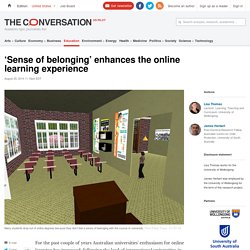
While the number of students undertaking studies on campus has remained relatively stable over the past three years, the number undertaking online or a combination of on-campus and online education continues to grow. The increase in online learning has taken place around the same time as a significant shift in the social and economic background of students. The implementation of the Bradley equity review of higher education has led to modest improvements in the number of university students from low socioeconomic backgrounds, regional/remote areas, indigenous students, students from a non-English-speaking background and students with a disability.
4 Weeks of SEL Lessons and Activities for Distance Learning - Lalilo Blog. SEL Resources - SEL Providers Council. Resource: Guide to a Brain Smart Start for Our Day. Skip to content Dr.
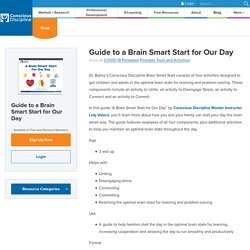
Bailey’s Conscious Discipline Brain Smart Start consists of four activities designed to get children and adults in the optimal brain state for learning and problem-solving. These components include an activity to Unite, an activity to Disengage Stress, an activity to Connect and an activity to Commit. In this guide “A Brain Smart Start for Our Day” by Conscious Discipline Master Instructor Lety Valero, you’ll learn more about how you and your family can start your day the brain smart way.
The guide features examples of all four components, plus additional activities to help you maintain an optimal brain state throughout the day. Age. 13 Powerful SEL Activities. Summit Preparatory Charter High School in Redwood City, California, uses a variety of activities in the weekly, 90-minute Habits, Community, and Culture (HCC) class, where students learn Habits of Success and develop social and emotional learning (SEL) skills.
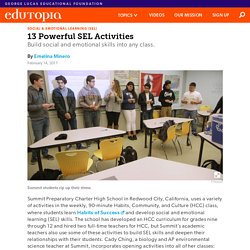
The school has developed an HCC curriculum for grades nine through 12 and hired two full-time teachers for HCC, but Summit’s academic teachers also use some of these activities to build SEL skills and deepen their relationships with their students. Cady Ching, a biology and AP environmental science teacher at Summit, incorporates opening activities into all of her classes: “In my freshman classes, we do them every class period.” Here are some of the opening, group sharing, and closing activities that teachers use at Summit: Opening Activities 1. SEL Parent and Educator Activities. 16 Social and Emotional Learning Activities - Aperture Education. From reading, writing, and arithmetic, social and emotional learning (SEL) can be woven into nearly any subject.

Many teachers believe in the importance of teaching students social and emotional skills, but not all are sure how to teach these skills. The good news is that SEL concepts can easily be taught right alongside core academic instruction in classrooms or afterschool programs. Here are 16 activity and lesson ideas — organized by core subject area — to get you started. Saving Sam: A Team-Building Activity Oh no!
Identifying Emotions Activity: Chameleon Moods. Social Emotional Learning for Students - Centervention® Through life experiences, interactions with family, friends, teachers, and coaches, you have been in a continuous feedback system that helps develop your social emotional skills.
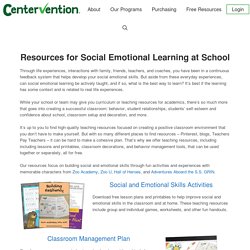
But aside from these everyday experiences, can social emotional learning be actively taught, and if so, what is the best way to learn? It’s best if the learning has some context and is related to real life experiences. While your school or team may give you curriculum or teaching resources for academics, there’s so much more that goes into creating a successful classroom: behavior, student relationships, students’ self-esteem and confidence about school, classroom setup and decoration, and more. It’s up to you to find high-quality teaching resources focused on creating a positive classroom environment that you don’t have to make yourself. But with so many different places to find resources – Pinterest, blogs, Teachers Pay Teachers – it can be hard to make a cohesive plan.
Responsible Decision Making - Social and Emotional Learning - ACT for Youth. Social and Emotional Learning (SEL) fosters the ability to make positive choices about how we behave.
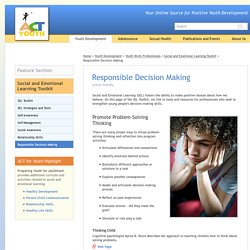
On this page of the SEL Toolkit, we link to tools and resources for professionals who seek to strengthen young people's decision-making skills. Promote Problem-Solving Thinking There are many simple ways to infuse problem-solving thinking and reflection into program activities: Articulate differences and connections Identify emotions behind actions Brainstorm different approaches or solutions to a task Explore possible consequences Model and articulate decision-making process Reflect on past experiences Evaluate actions - did they meet the goal?
Simulate or role play a task Thinking Child Cognitive psychologist Myrna B. Web Page 5 Problem-Solving Activities for the Classroom The five activities shared here by Concordia University educators can also be used outside the classroom. Guide to Tripod's 7Cs Framework -Tripod Education Partners. Tripod’s 7Cs™ framework of effective teaching and associated survey measures capture essential elements of instructional practice. Student survey results aligned with the 7Cs framework offer a streamlined way to provide actionable feedback for teachers and school leaders. Better survey results on the 7Cs components predict higher student achievement, engagement and motivation, as well as success skills and mindsets (Ferguson & Danielson, 2014; Ferguson et al., 2015; Kane & Cantrell, 2010; Kane et al., 2013; Stuit, Ferguson, & Phillips, 2013).
How do social and emotional skills develop in youth? On December 17, 1999, the U.N. General Assembly declared August 12th as International Youth Day to celebrate the crucial role that young people play in shaping and transforming societies. This year’s theme, “transforming education,” is an apt reminder that investing in high-quality education is key to capitalizing on the potential of all youth and achieving sustainable and equitable development. Adolescents, or young people between the ages of 10 and 25, represent roughly 25 percent of the world’s total population. This population of 1.8 billion individuals makes up the largest adolescent population in modern history, placing adolescents at the center of global attention.
While there are efforts to enhance adolescent well-being, learning, and opportunities, much of the focus has been on early childhood education and post-secondary employability—the years in between are often largely ignored. 4 Social/Emotional Skills You Can Easily Practice with Teens. 5 Social-Emotional Strategies for Teenagers. It takes a special soul to want to teach teenagers. How often have you heard, "I'd never want to teach middle school! "? I personally love that age. Teenagers haven't yet figured out who they are, so if I can teach them something that empowers them, they grab onto it and transform before my very eyes. They are so full of energy and potential that, given a meaningful direction, they will launch themselves toward a goal or endeavor. Of course, without a meaningful direction, teenagers can also explode on the launchpad. What's going on in that head of yours? A recent article in Edutopia explains why teens can be so volatile.
Neurologist Sarah-Jayne Blakemore explains this difference in her book Inventing Ourselves: The Secret Life of the Teenage Brain: “One major theory of adolescent development is that there is a mismatch between these two systems.